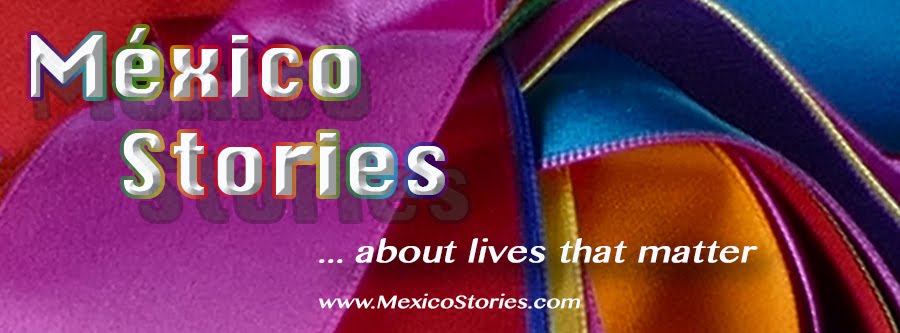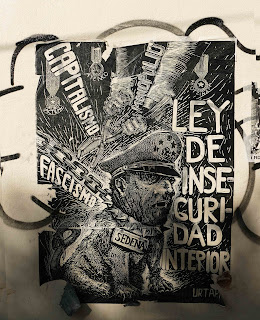Some days seem to be under a magic spell cast by
a master planner. This one started out with a cool, blue-sky morning as
we loaded ourselves and our luggage into a short cab ride to the Puerto
Escondido airport.
 |
| Ready to fly |
A man with a phone and a plane -- That’s
how Carlos Vega was introduced to us when we started figuring out how
to get to and from Oaxaca to Puerto Escondido. Because all the “normal”
airlines were booked, we wound up taking the twisty, seven-hour bus trip
through the spectacular Sierra Madre de Oaxaca mountains to Puerto
Escondido. We were delighted with the trip but thought one, long bus
trip was enough.
To
get back to Oaxaca, Bette found Carlos Vega and we called him and he
said to meet him at the airport. No reservations, no tickets, no money
exchanged … just “meet me there.” We didn’t know what to expect but we
went to the airport, sat at the “restaurant on the left” like he told us
to, and waited. Promptly, about the time we thought we should call him
to make sure everything was on track, he walked up and led us through
security and into a six-seater, twin engine plane. About 30 minutes
later we landed at the Oaxaca airport. Next time, we’re going both
directions with Carlos … phone number: 954-588-0062, in case you want to
call him.
 |
| Goodbye Puerto Escondido |
 |
| Sierra Madre Sur |
 |
| Detail from airport painting |
Bathroom breaks and art -- When
I landed in Oaxaca two weeks ago, I was on a mission and sped straight
through the airport into a waiting cab. After the short flight from
Puerto Escondido, we wanted a bathroom break before the cab ride. Bette
went first and while I watched the bags, I started exploring a stunning
painting but couldn’t find the artist’s name. When we exited the
building, we saw a series of what looked like giant, metal alebrijes
(fantasy creatures, usually wooden). We waived off the taxi driver and
spent several minutes taking pictures of the delightful sculptures,
which looked like the work of the same artist as the painting inside.
Finally, I found the artist’s name: Fernando Andriacci and he found a new devoted fan. His work also turned up later in the day.
Old money breakfast and synchronicity — Lisa Sonora, creator of Art House Oaxaca, where I’ll be staying for the coming week, met us for breakfast at Vieja Lira
(old money), a small Italian cafe in Oaxaca central. Talk flowed freely
and then Bette and I decided to do a short walk to give her a feel for
the area before we were to meet Linda Hanna, folk art tour guide and
Oaxaca co-ordinator for Feria Maestros del Arte.
Linda had invited us to her bed and breakfast, Casa Linda, for comida
(mid-day main meal) and was planning to pick us up at 2 pm so we had
about three hours to wander.
We
had just gotten oriented when Bette spied a shop that looked inviting.
As we crossed the street, about half a block away from us, we saw a
woman waving in our direction. We’re in the middle of Oaxaca. I don’t
know anyone, but the woman looks familiar. Suddenly we realize, it’s
Linda. She’s going into a meeting and tells us she’ll be out in an hour
and could give us a mini-tour before we have to go to lunch. “Just some
of my favorites,” she tells us. We’re delighted.
El Templo San Jerónimo Tlacocha- huaya —
When we entered the sixteenth century church, an organ was playing,
creating a musical backdrop to a most unusual church. I didn’t know it
at the time, but the organ is around 300 years old.
The church is one of Linda favorites because of the extensive
indigenous art work, primarily flowers. Built as a meditation and
contemplation center for the Dominicans, it has a warm, inviting energy
that made me just want to sit there quietly. Maybe next time.
 |
| For scale, see the man in lower right. |
 |
| Note tree on left ... big? |
El Tule --
When I was creating my Google Map for this trip, one of the “must sees”
was a tree Wikipedia states has the “stoutest trunk of any tree in the
world.” In spite of my love for trees, it was beginning to look like
this must-see would not happen this trip … until Linda mentioned it as
one of the many things we could see in the two hours we had before
comida.
I
jumped at the opportunity to see the ancient tree (age estimates between
1,200 - 3,000 years with 1,600 being the most agreed upon) and we were
off to the village of Santa María del Tule.
 |
| Note the person at the bottom right. |
 |
| More people at bottom right. |
I’ve
seen big trees: the giant sequoias are overwhelming in their grandeur,
and I’ve seen old trees: the twisted bristlecone pines in the eastern
Sierra are mind-bogglingly old, with at least a couple dating back five
thousand years. However, El Tule has it’s own way of stealing your
breath away. It is massive in the way a mountain is massive and its
trunk meanders rather than maintaining the expected round trunk shape,
creating walls of textures and burl flowers.
 |
| This is not a close up. |
Technically El Tule (named for the tule grasses growing from this naturally wet area) is a Montezuma cypress or ahuehuete (meaning "old man of the water" in Nahuatl). Mythically, the local Zapotec legend holds that it was planted about 1,400 years ago by Pecocha, a priest of Ehecatl, the Aztec wind god. All of that aside, it was humbling to stand in the shadows of this incredibly beautiful living being.
The
artist Fernando Andriacci has two pieces of art close to the tule tree
and the church. This one gives you another sense of scale of the tree
and church.
 |
| Note tree and church in background. |
Casa Linda — I had heard tales about Linda’s folk-art-filled bed and breakfast, but
still wasn’t prepared. Nestled on a beautiful, half-acre of trees,
rocks and a creek in the village of San Andres Huayapam, five miles from
central Oaxaca, this is a little piece of paradise. Linda is a weaver
who came to Oaxaca sixteen years ago, and stayed. She now leads folk-art
tours and shares her love of indigenous art and the villages of Oaxaca.
 |
| Dining room mural. |
The
above photo from Linda's website shows an incredible mural in her
dining room and is better than any photo I was able to take in my
beauty-stunned state. For more photos, please check out www.folkartfantasy.com/.
Not
only did we get to feast on the incredible beauty and variety of the
folk art displayed, her friend, Chef Sam, fed us royally.
And the beat goes on —
By the time Bette and I were returned to Art House Oaxaca we were
stuffed, with food, beauty, culture and inspiration. We had an hour or
so to rest before time for Bette to catch a taxi for her flight home. We
crashed in my room and it wasn’t long before we heard the distant
sounds of band music. We wondered what it was, but not enough to get up
and find out.
Walking
the half block to the corner got Bette's taxi made me realize what an
incredibly beautiful evening it was … and I could still hear the music,
so, once Bette was on her way, I followed the music and found bands and
mojigangas (large puppets) celebrating a wedding in Santo Domingo Plaza.
I followed them for awhile and then ran into a similar parade for a
quinceanera. The birthday woman was beautiful so I joined her parade,
taking futile pictures in the dark with my iPhone but enjoying the
music, dancing and conviviality.
At
some point, a guy handed me a thimble full of a clear liquid
(presumably mezcal), the first sip of which burned for a block and a
half. The gesture of inclusion seemed to be a perfect note on which to
end this incredible day.
















































